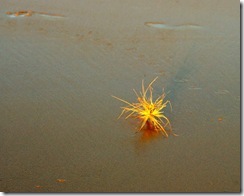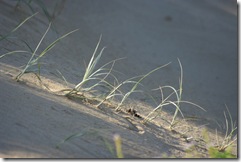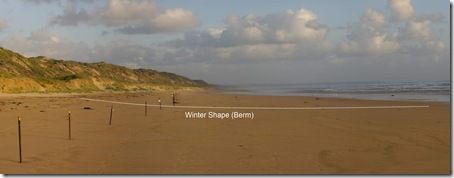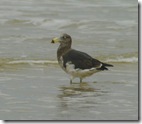 Australia doesn’t really have the true (by which I mean the American Western Movie Style) tumble weed but the seed of the humble Spinifex, Spinifex sericeus comes very close. This grass also known as the beach spinifex is crucial for dune stability. It usually forms tussocks and has long rhizomes that spread out through the sand and hold the dunes in place. It can easily be propogated from rhizome cuttings planted in damp sand. Interestingly this spinifex has separate male and female plants. The above photo shows the dried flower, from a female plant, now holding the fertile seed. It blows along the beach following the shifting sand and thus populating newly formed dunes. A very clever design!
Australia doesn’t really have the true (by which I mean the American Western Movie Style) tumble weed but the seed of the humble Spinifex, Spinifex sericeus comes very close. This grass also known as the beach spinifex is crucial for dune stability. It usually forms tussocks and has long rhizomes that spread out through the sand and hold the dunes in place. It can easily be propogated from rhizome cuttings planted in damp sand. Interestingly this spinifex has separate male and female plants. The above photo shows the dried flower, from a female plant, now holding the fertile seed. It blows along the beach following the shifting sand and thus populating newly formed dunes. A very clever design!


The introduced marram grass, is now competing with native spinifex all along the Venus Bay beach and may eventually replace all the native spinifex. The marram grass also helps stabilize the dunes, that is why it was originally introduced, but its dense growth may contribute to steeper dunes by entrapping more sand, at the expense of the upper beach zone (ie summer berm) This may be one factor in an increased susceptibility to direct wave erosion. The dense grass mat also inhibits other dune pioneer plants and may reduce the traditional nesting and foraging habitat available for some small animals and birds. For example at Summerland Beach on Phillip Island the change in dune shape bought about by marram grass replacing spinifex has meant special temporary penguin tracks have had to be constructed up the dunes to give access to the little penguins breeding areas.







